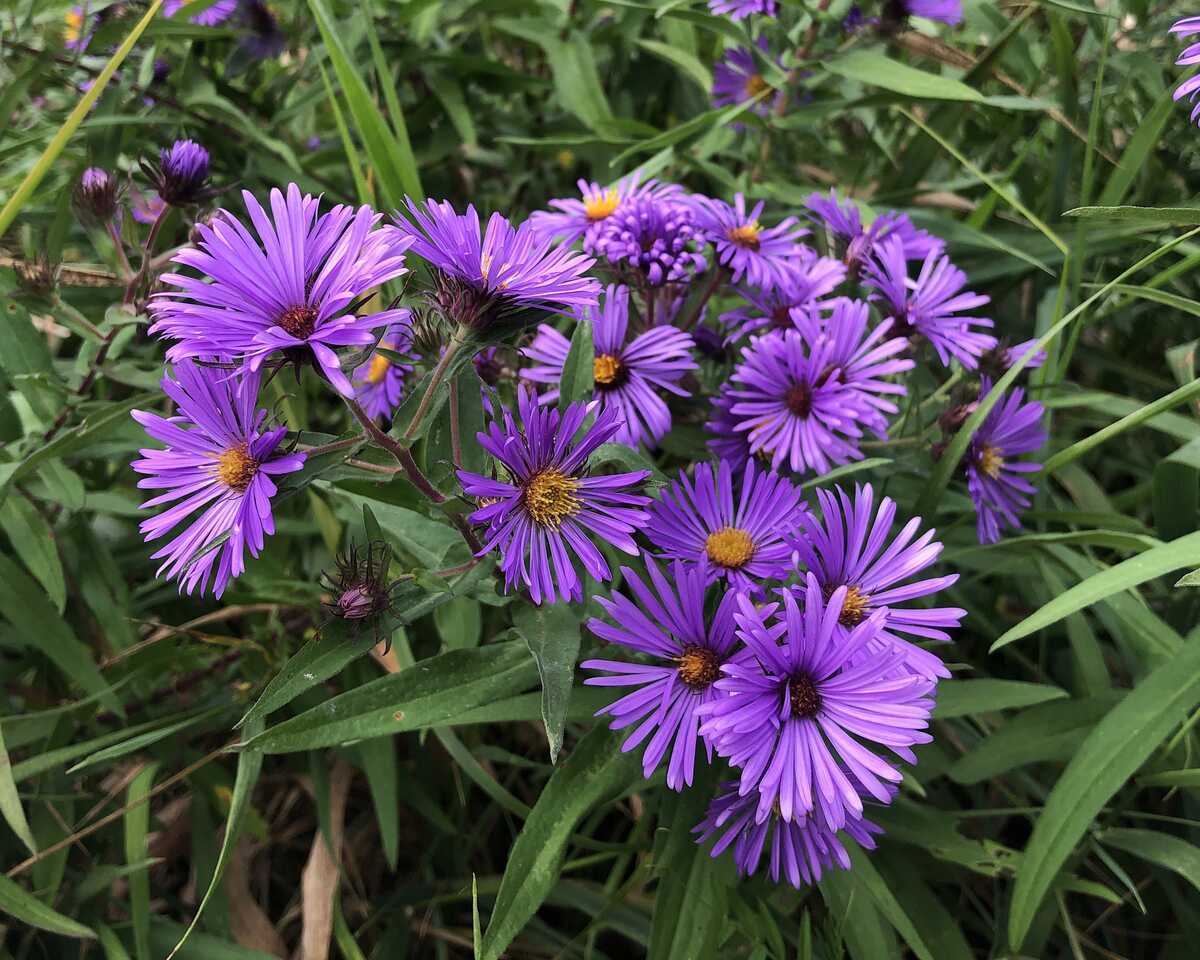
The best native plants for West Virginia, like wild geranium and common buttonbush, are those that have been happily thriving in the state’s forests, valleys, and mountains long before we even started thinking about our gardens.
As attractive to local wildlife as they are resilient against West Virginia’s weather extremes, these plants certainly offer a winning solution for your garden. Let’s meet some of the best natives that promise a greener, more harmonious outdoor space.
West Virginia Native Flowers
The great state of West Virginia has a wealth of native flowers that color every corner with their unique blooms. Here are some you should consider introducing to your garden:
Black-Eyed Susan (Rudbeckia hirta)
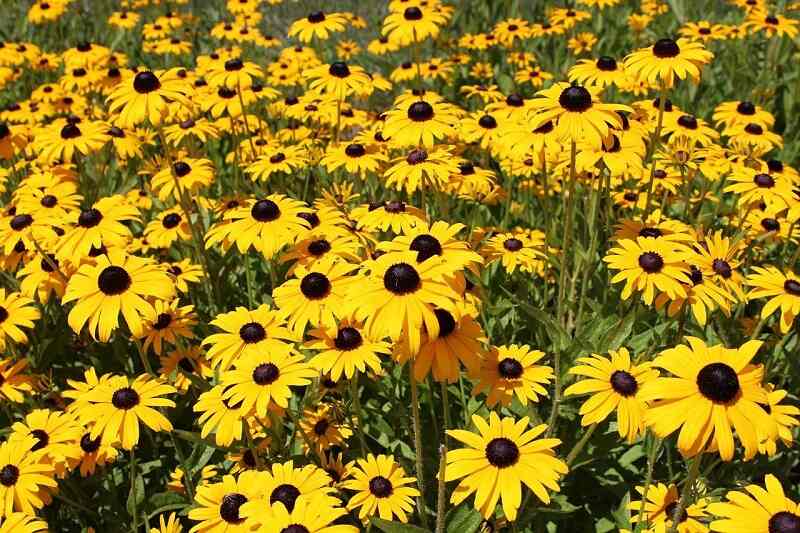
A flower that makes you think of beauty, black-eyed Susan has thrived as one that will aggressively take over an area, in some cases crowding out other species. Native Americans found it had medicinal value, making a tea of the roots to treat colds and earaches and a lotion to put on sores, snakebites, and swellings.
- Plant type: Flower
- USDA Hardiness Zone: 3 to 9
- Sun: Full sun
- Soil: Clay, sand, loam, acidic, moist, well-drained
- Duration: Depending on growing conditions, it can act as a biennial, annual, or short-lived perennial
- Fragrance: Sweet
- Bloom time: Spring, summer, early autumn
- Water needs: Medium. It has moderate drought tolerance.
- Mature height: 1 to 3 feet
- Potential Hazards: The hairs on the stems and leaves can irritate a person’s skin. If that happens, wash the area and the clothes you were wearing.
- Maintenance: Low. Can self-seed freely. Black-eyed Susan can become aggressive if given an environment that is too perfect and insufficient competition.
Butterfly Milkweed (Asclepias tuberosa)
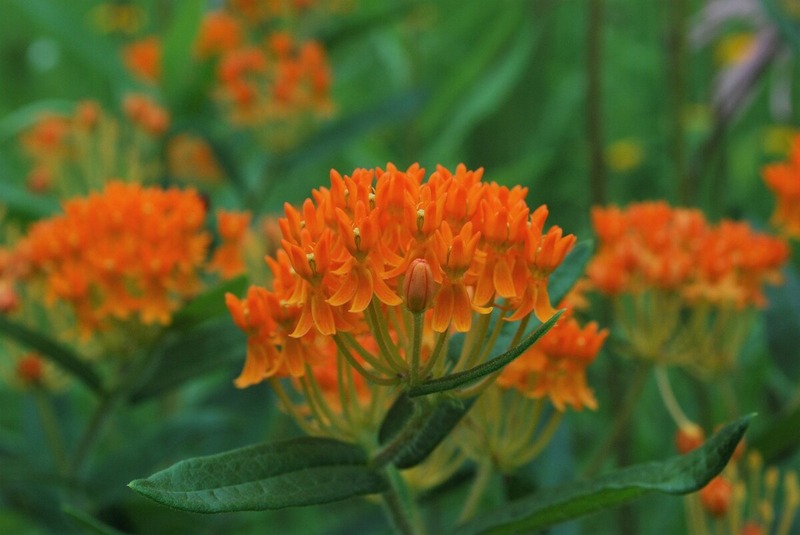
There are a lot of reasons to plant Asclepias tuberosa. One of them is to help preserve the official state butterfly, the monarch. The Eastern monarch population has dropped 90 percent in the last 20 years. The only plant that will provide for monarch caterpillars is the milkweed; Without it, they will die.
Butterfly milkweed has been an important plant from its earliest days. Native Americans used its fibers for ropes and clothing and also for food. European settlers used the leaves to make tea to treat inflammation in the chest, leading them to call the plant “pleurisy root.” It was listed in the American Pharmacopoeia and the National Formulary until 1936.
- Plant type: Flower
- USDA Hardiness Zone: 3a to 9b
- Sun: Full sun
- Soil: Clay, loam, or sandy soil that’s well-drained, moist, or somewhat wet
- Duration: Perennial
- Fragrance: Vanilla
- Bloom time: Spring through summer
- Water needs: Low
- Mature height: 1 to 2 feet
- Potential hazards: Toxic to dogs, cats, horses, and also humans when ingested without sufficient preparation as it contains cardiac glycosides.
- Maintenance: Low
New England Aster (Symphyotrichum novae-angliae)
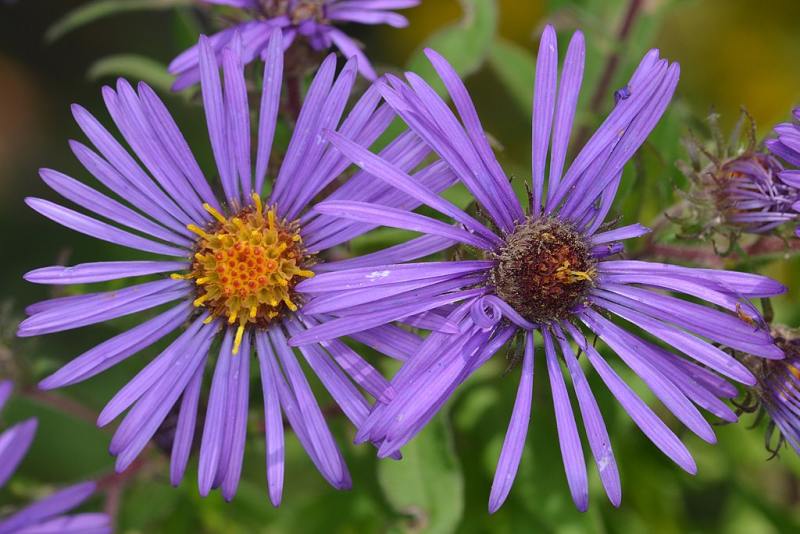
New England aster bursts with color, often with hundreds of large, colorful, deep purple and pink flowers on leafy plants that can reach 6 feet in height. It grows in woods, meadows, prairies, and streambeds, but many people recognize it from roadsides.
- Plant type: Flower
- USDA Hardiness Zone: 4a to 8b
- Sun: Full sun, partial shade
- Soil: Sandy, loamy, clay
- Duration: Perennial
- Fragrance: None
- Bloom time: Late summer, autumn
- Water needs: Medium
- Mature height: 3 to 6 feet
- Potential hazards: Vulnerable to powdery mildew. Be mindful of aster wilt if plants are grown in poorly drained clay soils.
- Maintenance Needs: Medium. It may require staking or other support if it grows tall. Pinch back stems before midsummer to control the plant height and produce more flowers.
Purple Coneflower (Echinacea purpurea)
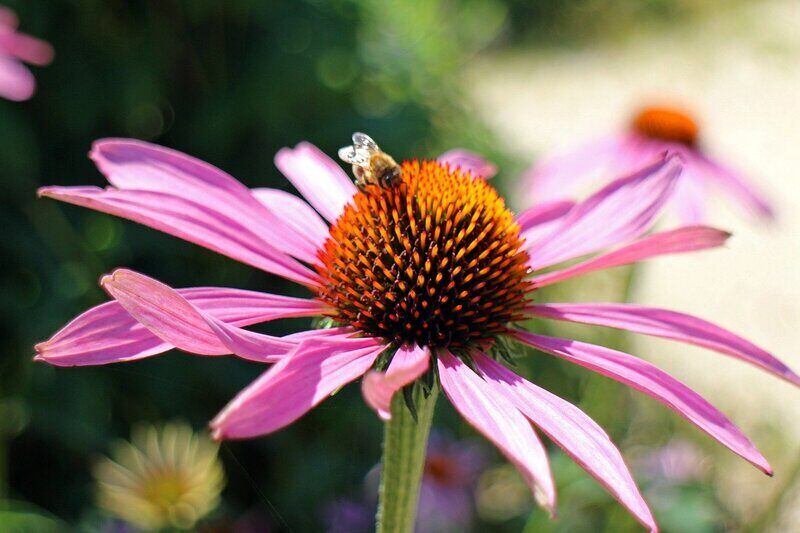
Purple coneflower is a popular plant with its long-lasting lavender flowers. It has a spiny, brown disk on top that looks like a hedgehog, leading to its scientific name, Echinacea, which is based on the Greek word for the spiny-backed little mammal. The flowers are used to make a popular herbal tea.
Purple coneflower has been used for centuries to treat the common cold, coughs, bronchitis, upper respiratory infections, and some inflammatory conditions. Research finds that it works to treat the symptoms but not to prevent illness.
- Plant type: Flower
- USDA Hardiness Zone: 3a to 8b
- Sun: Full sun, partial shade
- Soil: Clay, sand, loam, well-drained
- Duration: Perennial
- Fragrance: Light, sweet, honey-like
- Bloom time: April to September
- Water needs: Medium
- Mature height: 2 to 5 feet
- Potential hazards: None
- Maintenance Needs: Low
Red Columbine (Aquilegia canadensis)
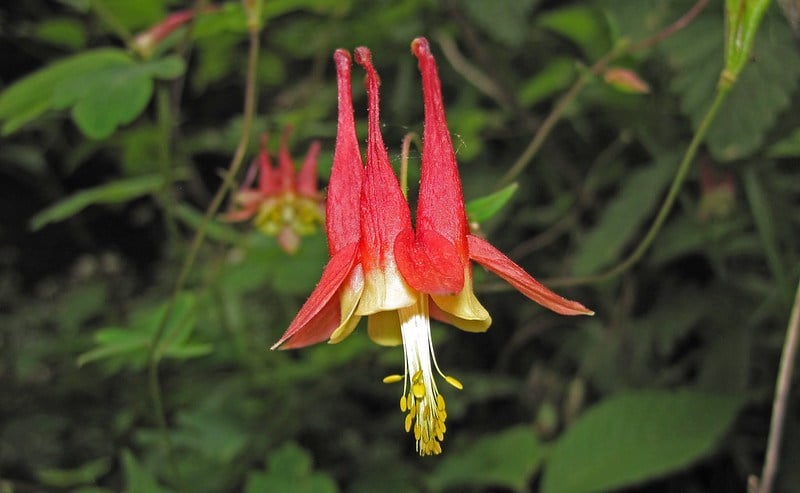
With a bright, attractive flower, red columbine is known for its red and yellow flowers that have a spur on their back that led people to call it “Aquilegia,” a form of the Latin word (“aquila”) for eagle.
The red columbine is a popular choice for gardens that want to attract wildlife. Its nectar-rich flowers are a magnet for hummingbirds, bees, and butterflies, while its seeds provide sustenance for finches and buntings.
- Plant Type: Flower
- USDA Hardiness Zone: 3a to 8b
- Sun: Full sun or partial shade
- Soil: Clay, silt, or sandy soil that’s well-drained, moist, dry-ish
- Duration: Perennial
- Fragrance: None
- Bloom Time: Spring
- Water Needs: Weekly or whenever the soil is completely dry. It can tolerate occasional dry conditions.
- Mature Height: 1 to 3 feet
- Potential Hazards: Moderately flammable/risk of fire
- Maintenance Needs: Low; deadhead blooms as needed, cut back in late summer
Swamp Milkweed (Asclepias incarnata)
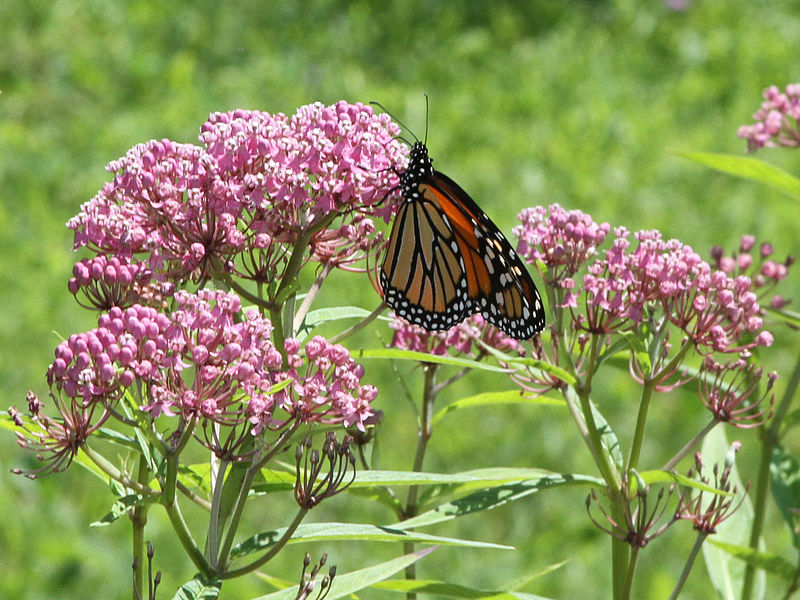
Swamp milkweed is very similar to butterfly milkweed (for both the monarch butterflies and its history as a health remedy for the early people), but with one difference: It grows in water. It’s found in swamps, stream beds, river bottomlands, and wet meadows, something that monarchs appreciate since they lay their eggs on it, and the caterpillars feed on its leaves.
Something to be careful about: The common milkweed is similar to the butterfly and swamp milkweeds, but unlike them, it is very aggressive, taking over in the same manner as an invasive species.
- Plant type: Flower
- USDA Hardiness Zone: 3a to 9b
- Sun: Full sun to partial shade
- Soil: Organically rich, clay, silt, slightly acidic, well-drained soil
- Duration: Perennial
- Fragrance: Sweet-smelling
- Bloom time: July to September
- Water needs: High
- Mature height: 4 to 6 feet
- Potential hazards: Poisonous to humans and animals in large quantities
- Maintenance: Low
Virginia Bluebells (Mertensia virginica)
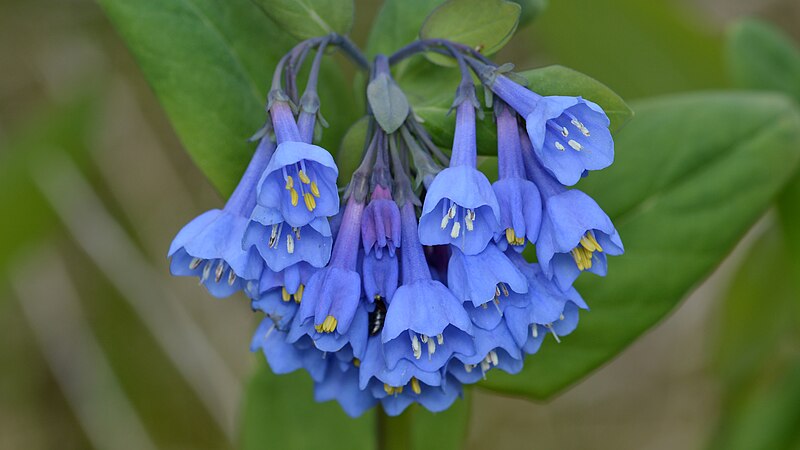
Named for its absolutely gorgeous lavender-blue, bell-shaped flowers, the Virginia bluebell needs partial to full shade in order to grow. Something to keep in mind is that Virginia bluebells will retreat into dormancy throughout the summer season.
Because of this unique growth pattern, it’s common for people to pair them with later-emerging species. As the Virginia bluebells go dormant, plants such as purple coneflower or swamp milkweed begin their bloom cycle and ensure an ongoing display of color through the summer.
- Plant type: Flower
- USDA Hardiness Zone: 3a to 9b
- Sun: Part shade to full shade
- Soil: High organic matter. Acid, alkaline, neutral. Moist but well-drained.
- Duration: Perennial
- Fragrance: Light, sweet
- Bloom Time: Spring
- Water Needs: Average. It does its best when moisture is abundant and will decline when the soil is too dry.
- Mature height: 1 to 2 feet
- Potential Hazards: None
- Maintenance Needs: Medium. This plant self-seeds but is not easy to propagate. It should be cut back after flowering.
Wild Geranium (Geranium maculatum)
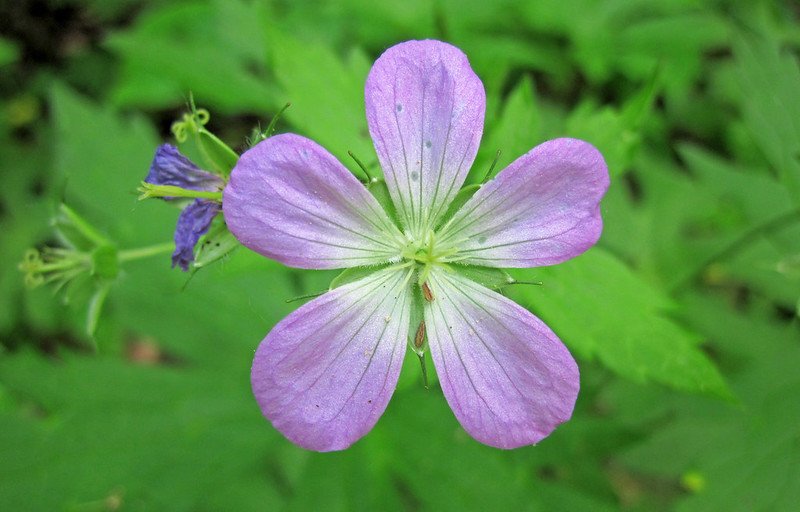
Wild geranium is known for being attractive, sprouting lavender flowers that bloom in clusters and in classic saucer shapes.
Geranium maculatum oil, often called just “geranium oil,” is extracted from the stems, leaves, and flowers. It is used in the hair-care and fragrance industries. It is also used as an insecticide.
- Plant Type: Flower
- USDA Hardiness Zone: 3a to 11b
- Sun: Full sun or partial shade
- Soil: Clay, silt, high organic matter, or sandy soil that’s well-drained, moist, or somewhat wet.
- Duration: Perennial
- Fragrance: Mildly floral
- Bloom Time: Spring and summer
- Water Needs: Water regularly as it prefers consistently moist soil, but it can tolerate some drought once established.
- Mature Height: 1 to 2 feet
- Potential Hazards: None
- Maintenance Needs: Low
West Virginia Native Grasses
Native grasses are essential to any garden aiming for the full West Virginia look. Here are some of the best picks for your garden:
Little Bluestem (Schizachyrium scoparium)
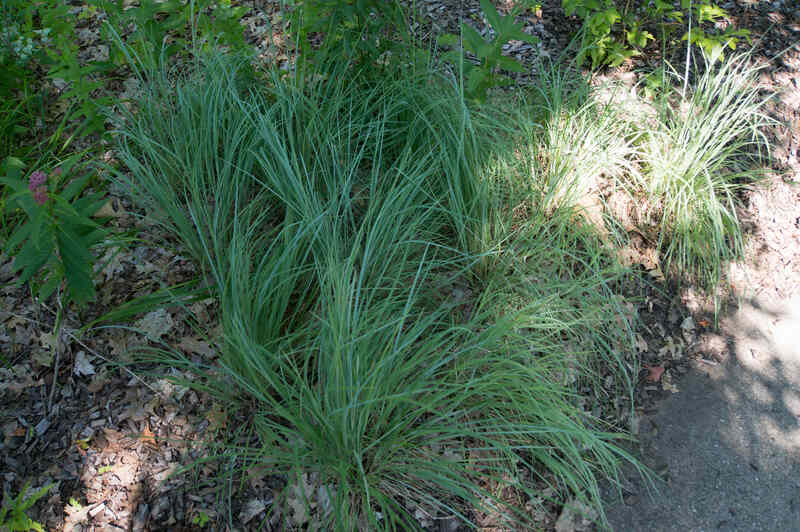
Little bluestem offers blue-green stems early in the year that become a gorgeous mahogany-red with white, bright seed tufts in the fall, a color that remains in winter. You understand why it thrives as a native grass when you plant it in a small garden: It self-seeds and spreads gradually, expanding its clump size.
- Plant type: Ornamental grass
- USDA Hardiness Zone: 3a to 9b
- Sun: Full sun
- Soil: Clay, silt, or sandy soil that’s dry to moist, well-drained soils
- Duration: Perennial
- Fragrance: None
- Bloom time: June to October
- Water needs: Low
- Mature height: 2 to 4 feet
- Potential Hazards: None
- Maintenance: Low
Switchgrass (Panicum virgatum)
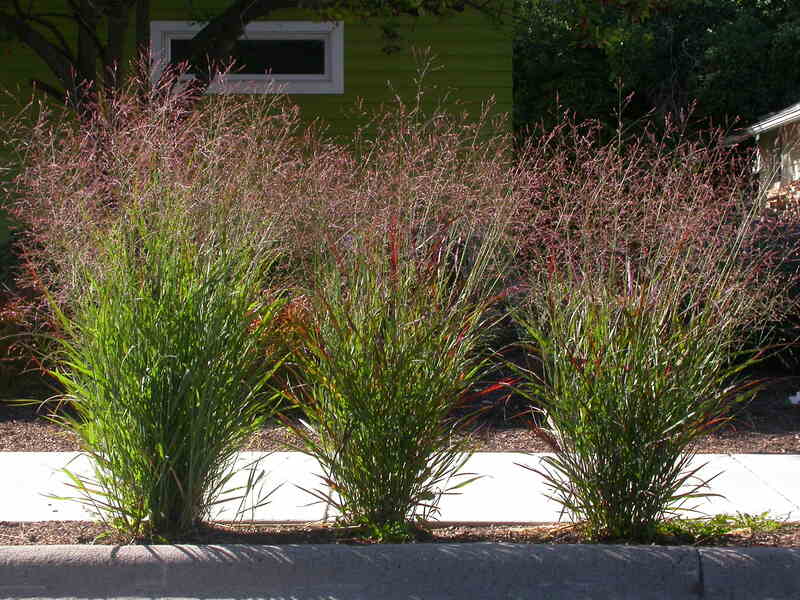
Switchgrass is slowly but surely securing its place as a popular plant for borders or screens. It is slightly salt tolerant, which matters in a state that relies on road salt, withstands flooding and droughts, doesn’t fall to air pollution, and resists the grazing of deer. Add some aesthetic appeal into the mix, and you’ve got yourself one savvy contender for your garden.
- Plant type: Grass
- USDA Hardiness Zone: 5a to 9b
- Sun: Full sun, partial shade
- Soil: Sandy, loamy, clay, limestone-based
- Duration: Perennial
- Fragrance: None
- Bloom time: Late summer through fall
- Water needs: Medium
- Mature height: 3 to 7 feet
- Potential Hazards: It is flammable, so you should plant it away from buildings.
- Maintenance: Low
West Virginia Native Shrubs
Shrubs create a nice backdrop for your garden, breaking up the visual monotony while providing structure and substance. Here are some indigenous shrubs worth exploring:
Common Buttonbush (Cephalanthus occidentalis)
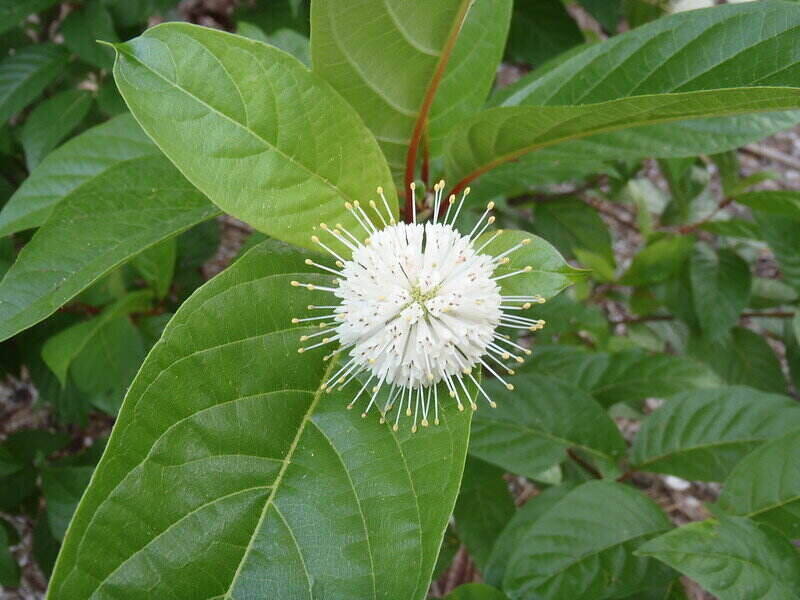
Resembling a pincushion, with dozens of pins stuck into a large ball, the flower head of the common buttonbush is quite distinctive. It grows in wet soils, including flood conditions and shallow standing water, so it’s found in swamps, ponds, streams, and river edges. You may observe ducks and other waterfowl taking advantage of this plant for nourishment.
- Plant type: Shrub
- USDA Hardiness Zone: 5a to 9b
- Sun: Full sun, partial shade
- Soil: Loam, sand, clay, acidic
- Duration: Perennial
- Fragrance: Dried flowers and leaves smell like freshly mown grass
- Bloom time: June to August
- Water Needs: Average, high
- Potential Hazards: None
- Mature Height: 5 to 8 feet
Mountain Laurel (Kalmia latifolia)
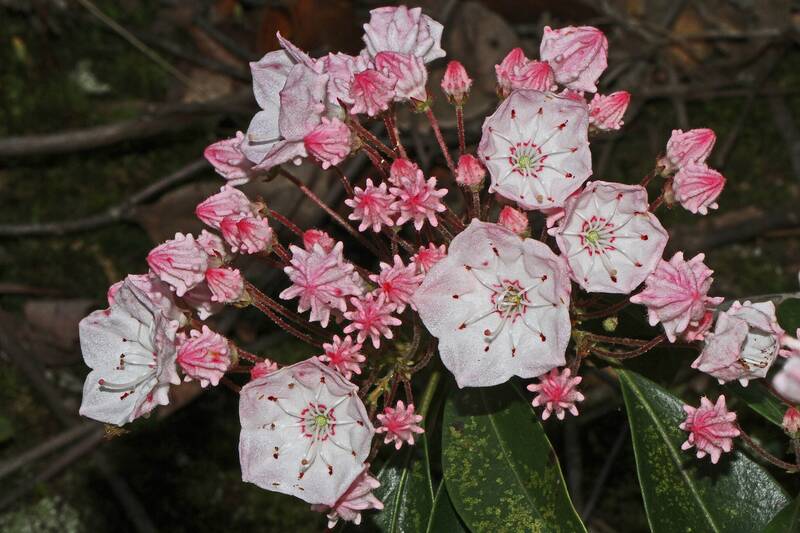
“Mountain laurel” is the perfect name for a plant in The Mountain State. More than that, it is one of the most beautiful native shrubs, with flowers that are bell-shaped, white to pink, and with red rose spots inside. As the flower opens, the stamens are bent back like a spring and fling out the pollen when tripped by a bee.
The wood of the plant has been used to make furniture and bowls, and the burls to make tobacco pipes.
- Plant type: Shrub
- USDA Hardiness Zone: 4a to 9b
- Sun: Partial shade
- Soil: Cool, moist, rocky, or sandy soils
- Duration: Perennial
- Fragrance: Like grape bubblegum
- Bloom time: April to July
- Water needs: Low
- Mature height: Up to about 32 feet tall when growing as a tree; usually shrub-like and much shorter, up to 6 to 10 feet tall.
- Potential hazards: Highly toxic and may be fatal to humans if eaten. Highly flammable; keep away from buildings.
- Maintenance: Low
Winterberry (Ilex verticillata)
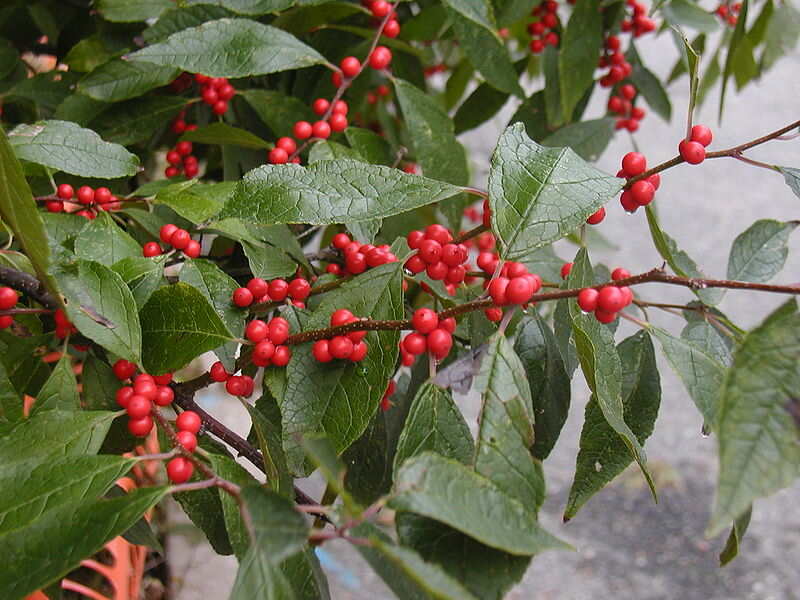
The Native Americans found the plant already growing when they arrived, and they came to use its small, red berries for medicinal purposes, leading them to call it “fever bush.” Birds make use of the seeds, too, feeding on them, especially in winter (which led to the common name). However, it is mildly toxic to cats, dogs, and horses, giving them nausea and diarrhea.
- Plant type: Shrub
- USDA Hardiness Zone: 3a to 9b
- Sun: Full sun to partial shade
- Soil: Clay, loam, sand, moist, acidic
- Duration: Perennial
- Fragrance: None
- Water needs: Medium to high
- Mature height: 3 to 15 feet
- Potential hazard: Might be toxic if ingested
- Maintenance: Low
West Virginia Native Trees
A West Virginia garden would not be complete without a few native trees to provide shade, a sense of place, and habitats for the local fauna. Here are some trees you might consider:
Eastern Red Cedar (Juniperus virginiana)
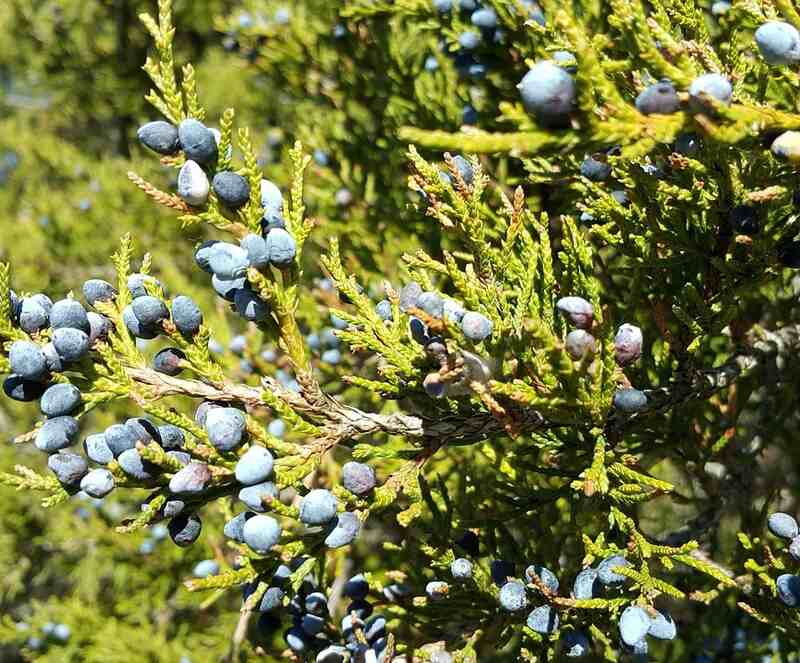
The earliest European settlers found this tree already in place in North America, with the settlers at Roanoke Island in 1564 glad to have it as they built cabins and furniture. It grows to 40 feet, so it isn’t a small tree. It is known for its bold fragrance, called the cedar-chest smell.
- Plant type: Tree
- USDA Hardiness Zone: 2a to 9b
- Sun: Full sun to partial shade
- Soil: Sandy, loam, clay, and rocky soils that are dry or moist
- Duration: Perennial
- Fragrance: Cedar-chest smell
- Bloom time: January to March
- Water needs: Low to medium
- Mature height: 30 to 40 feet
- Potential Hazards: Mildly toxic if eaten; highly flammable
- Maintenance Needs: Low
Eastern Redbud (Cercis canadensis)
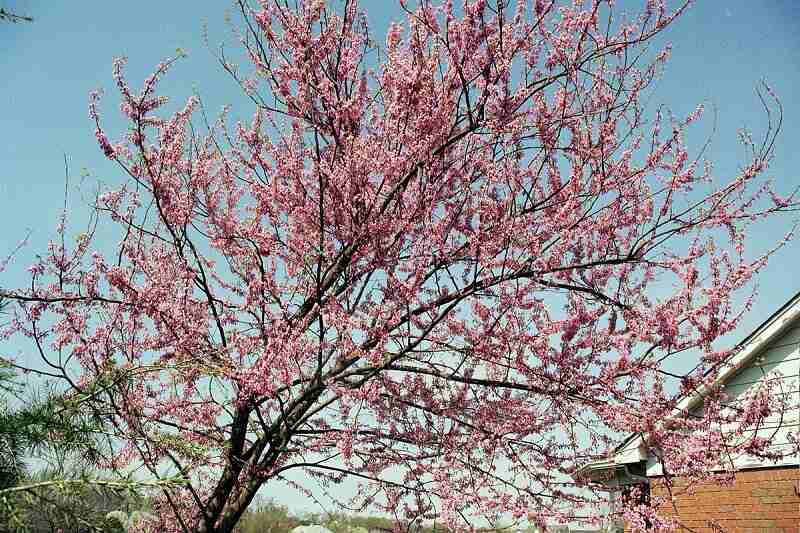
When the first settlers came to the Appalachian Mountains in West Virginia, they made it a point to claim land that had the pink-leaved Eastern redbud trees. It meant that the soil was good for farming. The leaves of this deciduous tree are often gathered up to make tea, and its roots are used to make a red dye.
It’s also known as the Judas tree due to a translation error, and it has its own place in folklore. The legend says that it was from this tree that Judas took his own life after betraying Jesus. The once-white flowers turned pink as a symbol of disgrace or perhaps to reflect traces of blood.
- Plant type: Tree
- USDA Hardiness Zone: 4a to 9b
- Sun: Full sun to partial shade
- Soil: Clay, silt, high organic matter, or sandy soil that’s well-drained, moist, or occasionally dry
- Duration: Perennial
- Fragrance: Sweet
- Bloom time: March to May
- Water needs: Low to Medium
- Mature height: 20 to 30 feet
- Potential Hazards: Relatively free of pests and diseases
- Maintenance Needs: Low
Flowering Dogwood (Cornus florida)
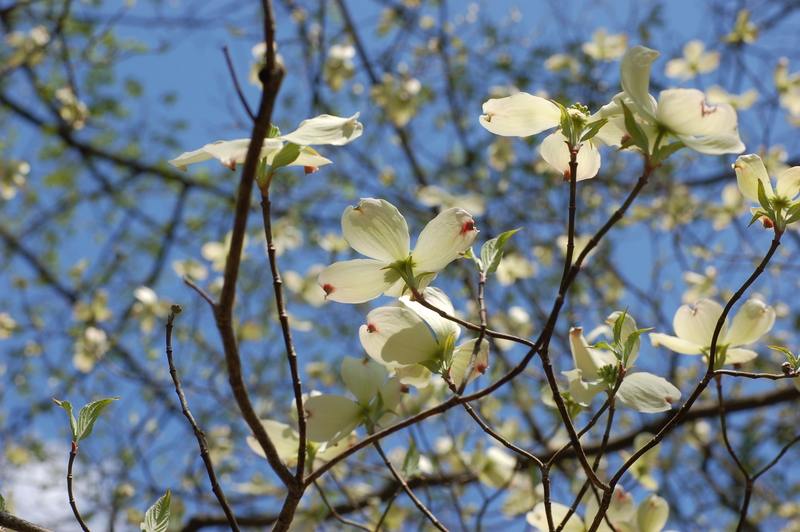
It is a common tree in West Virginia, spotted growing under larger ones. While it has pretty white flowers that include pink coloring, it is known for fruit that looks like a berry, growing bright red and a half-inch long.
There is a legend in West Virginia going back to its earliest days: If a man gave a woman a dogwood flower and she kept it, it meant she cared for him, too. But if she discarded it …well, he knew where he stood.
- Plant type: Tree
- USDA Hardiness Zone: 5a to 9b
- Sun: Grows best in partial shade but can tolerate full sun
- Soil: Clay, silt, high organic matter, or sandy soil that’s well-drained, moist, or occasionally dry
- Duration: Perennial
- Fragrance: Slightly fragrant
- Bloom time: March to May
- Water needs: Medium
- Mature height: 15 to 25 feet
- Maintenance: Low
How to Choose Native Plants for Your Landscape
Whether you’re looking to create a wildlife-friendly space or capture more of West Virginia’s wilderness in your own garden, it’s important to think practically. Here is the best way to identify which plants align best with your efforts:
Soil compatibility: Consider how rich the native soil is in organic matter. Is the pH somewhat acidic or leans towards alkaline? Have you taken a soil test? For instance, many West Virginia soils have clay content, which is great news if you’re interested in black-eyed Susans but not so much for Virginia bluebells.
Size considerations: Always consider how big the plant will grow over time. No, not just initially, but once fully matured. For small gardens, you might want to avoid larger plants like switchgrass, which can reach up to 7 feet.
Watering needs: Different plants have varying water requirements. While some native flowers thrive with moderate watering at regular intervals, native shrubs like mountain laurel can tolerate drought quite well.
Be aware of potential dangers: While native plants contribute to the well-being of your local environment, you should be aware of potential dangers associated with certain species. Some plants might be toxic to either humans or animals if they are ingested or even touched. Other plants native to West Virginia are highly flammable, like switchgrass, so you should double-check that before putting it next to your house.
Acquire the plants properly. Plants you dig out on your own will eventually deplete the areas of the seeds they need to be self-sustaining, according to the West Virginia DNR. Find a nursery to get your native plants, and try to find one that gets the seeds it uses to grow its stock from the places that use the income to make sure native plants will continue on.
Wildlife affinity: Certain native flowers such as red columbine attract hummingbirds while bees and butterflies gravitate towards New England aster. If encouraging biodiversity in your yard is part of your plan, be sure to choose such pollinator-friendly species.
Why Use Native Plants?
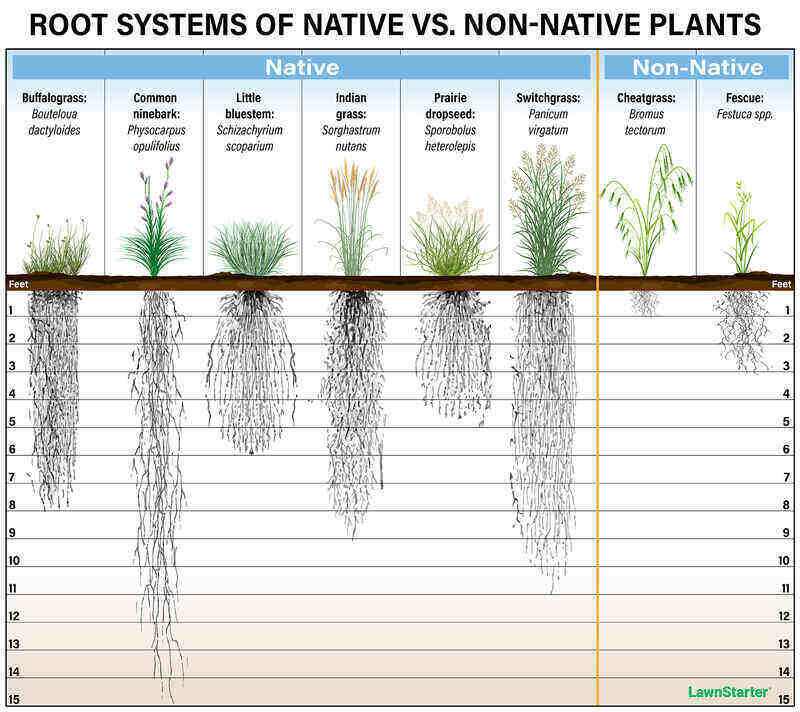
The benefits of native plants in landscaping stretch beyond aesthetics. Here are a few advantages:
- They are low maintenance. It is how they survived before any humans arrived.
- They resist West Virginia diseases. Native plant species are generally more resistant to local diseases and pests. Having evolved in the region’s specific climate and soil conditions, they’ve developed natural defenses against common pathogens and insects found in the state.
- They limit soil erosion with their deeper root systems.
- They improve the quality of water by filtering chemicals and impurities before they flow into creeks and rivers.
- They are pollinator-friendly, offering food and nesting places for birds, butterflies, bees, small mammals, and other animals.
- They do not require fertilizers. They developed without them.
- They need far fewer pesticides than introduced plants.
Cost of Installing Native Plants
Hiring professional landscapers can take most of the work off your hands and ensure that your native plants are installed correctly. The cost of a landscaping project is between $4,000 and $20,317, with most homeowners spending an average of $15 per square foot on a project.
Here is a breakdown of the costs:
- $5 per square foot for softscaping – Installing grass, plants, etc.
- $24 per square foot for hardscaping – This involves the installation of non-living components like pavers, ponds, or walkways.
- For an acre of native plants (as opposed to putting down sod), expect to pay between $2,000 and $4,000.
Installing Native Plants as a DIY Project
If you’re up for some DIY landscaping, planting native plants in your backyard could be a rewarding and cost-effective project. Here’s how to install native plants all by yourself:
- Take a soil test. A soil test will inform you about the nutrients your soil lacks and help determine which plants will thrive in your garden. You can collect a soil sample and send it to your county Extension office.
- Buy your plants. After making an informed decision about what types of plants will thrive best in your yard conditions, visit a local nursery. The West Virginia planting tool can offer great insights into what works best in your specific county.
- Prepare the ground. You need to clean your planting location thoroughly by removing any vegetation and weeds.
- Plant your plants. Dig holes just deep enough to accommodate your new plant’s root balls so they sit at the same depth as they did in their nursery pots. Carefully place each plant in its hole and fill it back up with dirt, tamping firmly around the base to ensure good contact between roots and soil.
- Water thoroughly. After all the plants have been installed in their new homes, give them a thorough watering. This will ensure they settle well into their new surroundings.
- Mulch around the base. Apply a layer of 1 to 4 inches of mulch around your newly installed plants. This helps retain vital moisture while deterring any weed growth that could compete with young plantings.
FAQ About West Virginia Native Plants
What Are Some Other Native Plants to Consider?
- Blueberries all have their blue or blue-black fruit, which is an important food for grouses, turkeys, and songbirds (mourning doves, thrushes, and, appropriately, bluebirds). They are also regularly eaten by black bears, foxes, and rabbits. Deer are seen enjoying them, too.
- Sweet fern shrubs grow low to the ground and on the eastern edge of the state. With its preference for sandy soil, it would be a struggle to grow in the clay soil of the rest of the state.
- Sunflowers are colorful and tall (up to 10 feet tall). Young sunflowers turn during the day to continue to face the sun. When they mature, they no longer turn.
Are There Native Plants That Might Be Too Dangerous?
The cardinal flower (Lobelia cardinalis) is considered a pretty flower, and it grows in wet soils, making it a popular choice to use as West Virginians work to rebuild their wetlands. But it is poisonous, made up of 14 alkaloids. Eating too much of it leads to vomiting, sweating, and pain. In extreme cases, it can lead to death.
How Many Plants in West Virginia Are Native?
Of the 2,500 species of wild plants found in West Virginia, 1,800, or 72 percent, are native, according to the West Virginia Native Plant Society.
What Plants in West Virginia Are Endangered?
Four plants found in West Virginia are on the U.S. Endangered Species List:
- Shale barren rockcress (Arabis serotina)
- Running buffalo clover (Trifolium stoloniferum)
- Harperella (Ptilimnium nodosum)
- Northeastern bulrush (Scirpus ancistrochaetus)
Two listed as threatened species:
- Virginia spiraea (Spiraea virginiana)
- Small whorled pogonia (Isotria medeoloides)
Thriving Gardens Begin With West Virginia Natives
Selecting and growing a native plant can be a fun and interesting do-it-yourself project. But it might also be a commitment of time and expertise that you don’t have on your own.
LawnStarter helps you connect with experienced local West Virginia landscaping pros who have vast knowledge about planting and gardening strategies for West Virginia natives. Whether you live in Charles Town, Harpers Ferry, Huntington, or other cities across the state, nothing compares to the sight of hummingbirds darting between your purple coneflowers or monarch butterflies fluttering around your milkweed.
Main Image Credit: Aaron Volkening / Flickr / CC BY 2.0